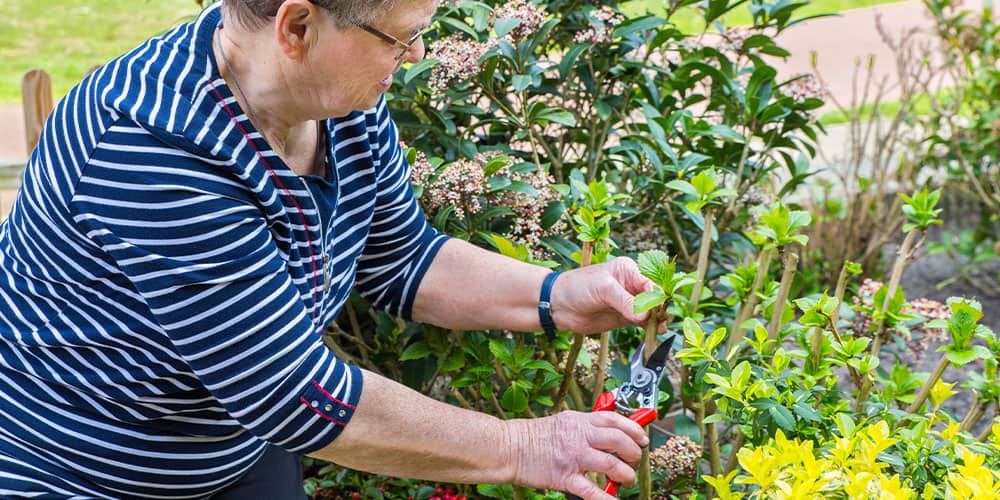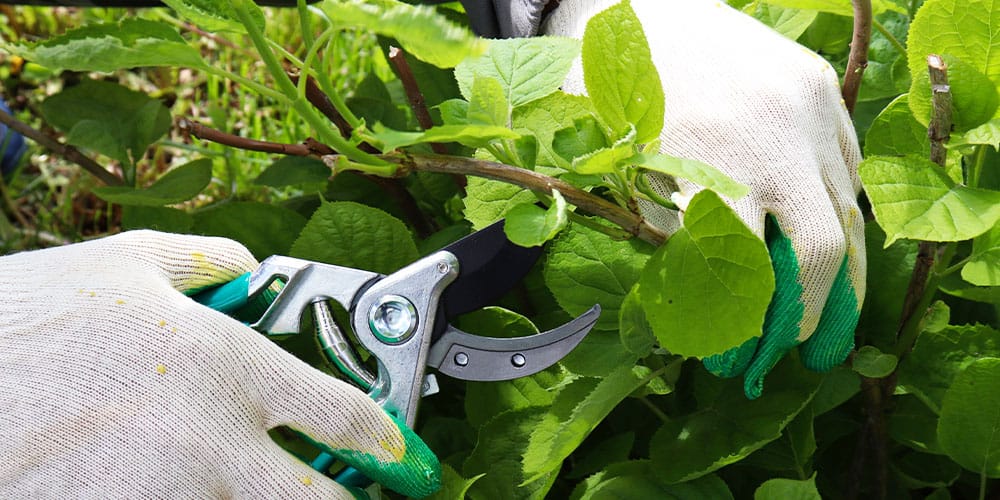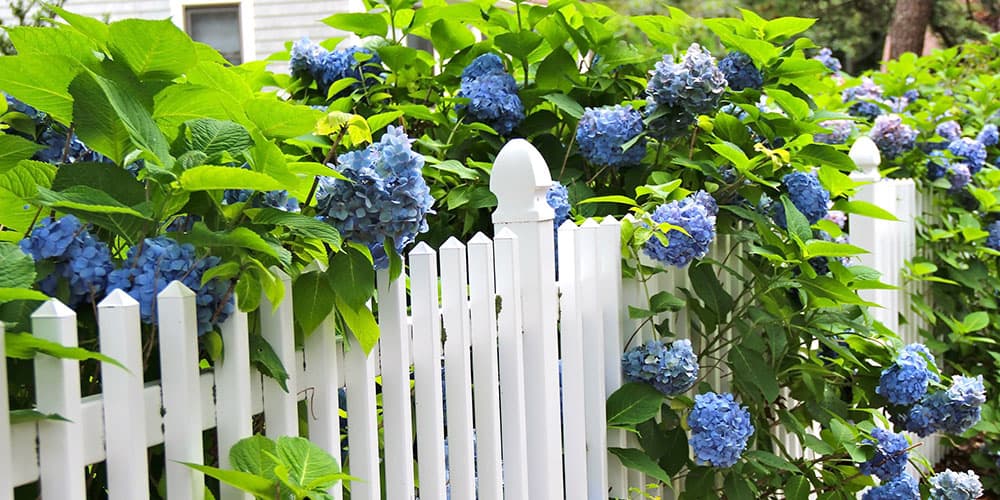The hydrangea’s pom-pom-like blooms, spectacular variations of color, and fresh, delicate scents are just a few of the many reasons these flowering shrubs are so special. As a summertime favorite in New Hampshire, hydrangeas add a distinctly beautiful essence to your landscape. Here’s how to trim them for the best growth!
 Types of Hydrangeas and How to Prune Them
Types of Hydrangeas and How to Prune Them
There are five main types of hydrangeas, and each of them has its own pruning requirements:
- Smooth (Arborescens): these have smaller mopheads with a coarse texture, including Invincibelle varieties.
- Macrophylla (Bigleaf): the most common type in North America, including mophead, lacecap, and mountain hydrangeas; a notable variety is Endless Summer.
- Oakleaf (Quercifolia): the only hydrangea with color-changing foliage that turns red in the fall, including Gatsby varieties.
- PeeGee (Paniculata): this variety has cone-shaped heads and thin, rough leaves, including Limelight and Quick Fire varieties.
- Climbing (Anomala petiolaris): a unique variety with climbing vines and large blooms.
Knowing which variety you’re growing will help you give your shrub the best care and give you some extra confidence when it’s time to prune! The most important thing to know for pruning is whether your variety blooms on new wood or old wood.
What Is the Difference Between New Wood and Old Wood?
Simply said, varieties that bloom on new wood grow their buds for the new season on fresh growth that begins in the spring. Varieties that bloom on old wood will bloom on the wood that grew last year, so pruning back too soon might leave you with a bush of foliage and not much else!
The easiest way to know if your shrub blooms on new or old wood is to keep that info card that comes with your tree at purchase. If you’re unsure what variety you have, you can prune your bush back to the new growth and see what happens; if you don’t see any blooms all summer, it’s an old-wood-bloomer. If you get lovely blooms, then it likely blooms on new wood, but you can double check where the blooms stem from to be sure!
Macrophylla, Oakleaf, and Climbing hydrangeas generally bloom on old wood, meaning that you can prune them after they finish blooming but before they start producing new buds. Keep an eye on them to get the timing right, so you don’t accidentally snip any fresh buds!
Paniculatas and Smooth hydrangeas generally bloom on new wood, which means that you can prune in the late winter or early spring and still get fabulous blooms. These varieties can handle a hard pruning if you want to give them a fresh start and generate some robust bushes; be sure to leave your strongest stems long enough for your desired height.
 How Short Should I Trim My Hydrangea?
How Short Should I Trim My Hydrangea?
There is no correct answer to this question! It depends entirely on your preference. If you are growing hydrangea for privacy, let that baby grow! If you have multiple shorter shrubs lining a walkway and don’t want them to be too high, cut them back to the desired shape.
The main goal of pruning is to keep your plant focused on producing healthy stems and blooms, so cutting away weak or dead branches and blooms will help your plant push its energy into healthy growth. For simple touch-ups, you can feel where the dead branches transition to healthy green growth; simply snap the branch at that point to keep it tidy and healthy.
 What Happens If You Don’t Prune Hydrangeas?
What Happens If You Don’t Prune Hydrangeas?
While you don’t necessarily have to prune your hydrangea each year and throughout the season, pruning is essential for encouraging new, healthy growth and keeping your chore list shorter in the long run! Pruning a few branches and dead blooms here and there will keep your spring to-do list shorter.
Remember that re-blooming hydrangeas will need deadheading; you’ll need to remove dead blooms to make room for new ones! Throughout the season, as your re-blooming varieties turnover, cut back blooms as they fade, and you’ll see a healthy output of fresh blooms in no time.
For more information on getting your hydrangea shrubs poppin’ in your garden this season, visit us at Stephens Landscaping Garden Center in Moultonborough, New Hampshire. Follow us on Facebook or Instagram for updates and featured products.


 How Short Should I Trim My Hydrangea?
How Short Should I Trim My Hydrangea? What Happens If You Don’t Prune Hydrangeas?
What Happens If You Don’t Prune Hydrangeas?